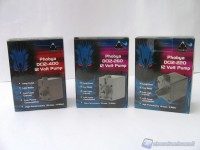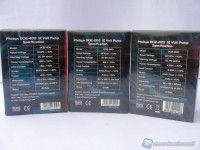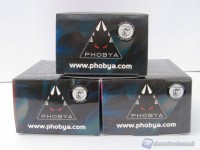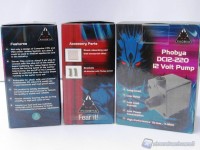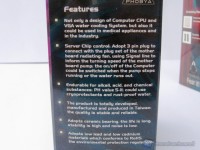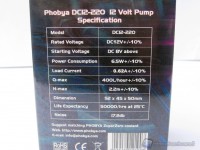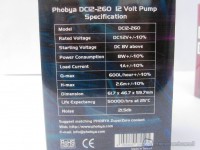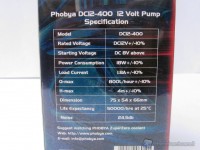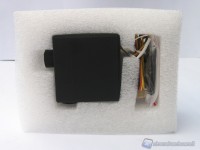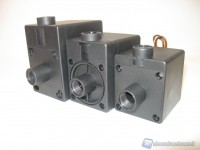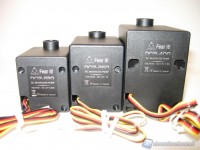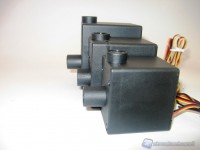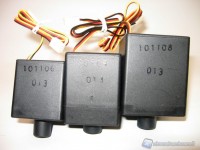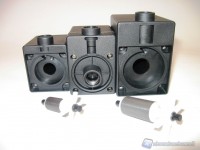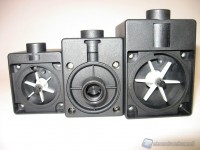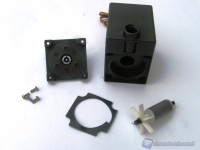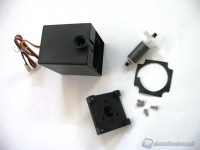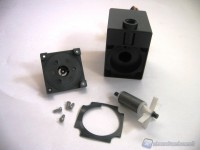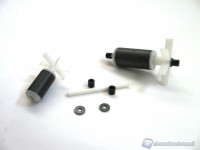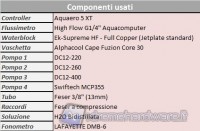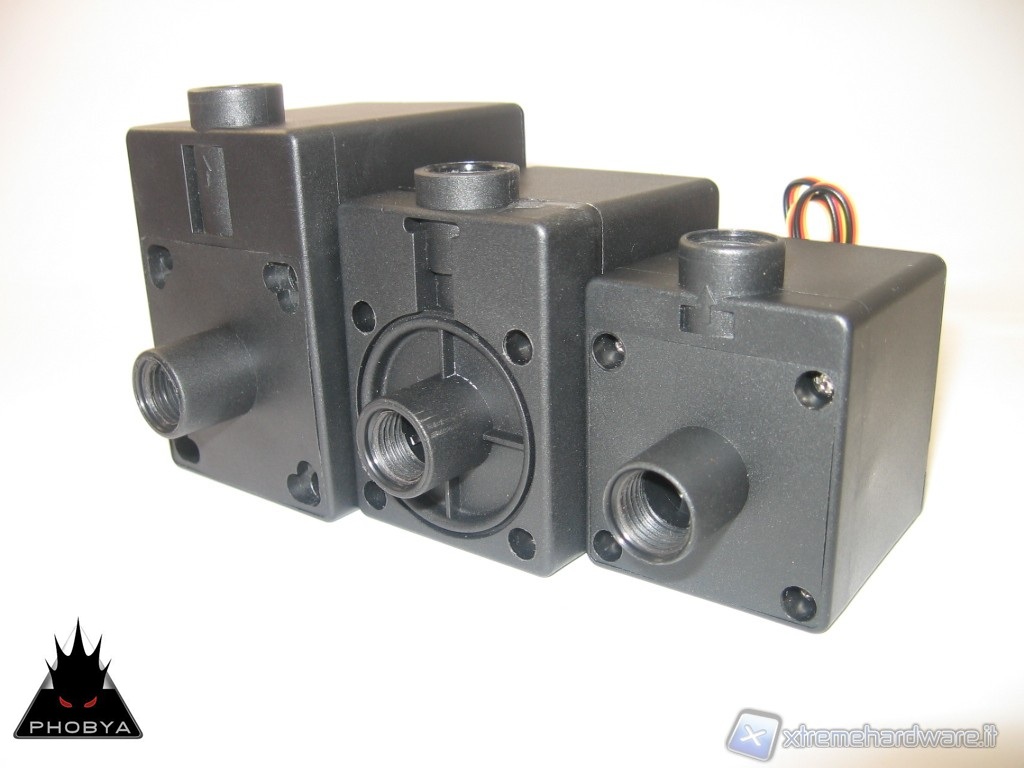 In this review XtremeHardware tested for you the Phobya liquid cooling system pumps. Produced in three models, DC12-220, DC12-260 and DC12-400, they are ideal to build a liquid cooling system with a modest cost.
In this review XtremeHardware tested for you the Phobya liquid cooling system pumps. Produced in three models, DC12-220, DC12-260 and DC12-400, they are ideal to build a liquid cooling system with a modest cost.
In previous years we have seen the introduction in the liquid cooling market of ever more powerful pumps and consequently more noisy, dictated by the need of flows and pressures that can work with increasingly restrictive water block. In the last 2 years, the market has brought about a change of course. Following less restrictive waterblocks and accessories, guaranteeing an equal, if not better, dissipation coefficient of the previous ones, the producers have focused on improving performance in relation to the flow and noise during operation. So new generation pumps have appeared on the market, which vary by type of technology used, power, size and supply voltage.
Pump means a machine tool capable of transferring energy to a liquid. Depending on how this energy transfer takes place, there are two types of pumps:
- volumetric pumps (that move constant amount of liquid for each cycle)
- kinetic pump (due to centrifugal force, the fluid increases its kinetic power that is converted into pressure energy. The power output depends on the prevalence)
Another general classification that we can do is:
- rotary motion pumps (ie centrifugal, with gears, with capsules, segmented, with membranes, etc.).
which we show the example photos below

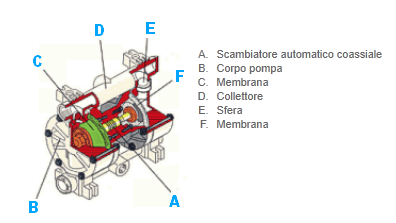
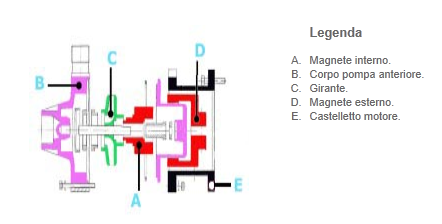
- Alternating motion pumps (ie piston, for example)
following is an example
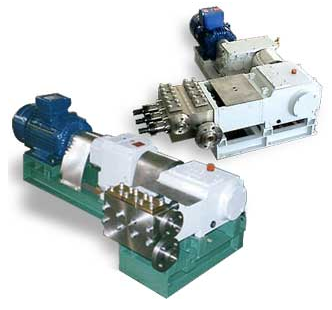
The prevalence term is mainly intended as the maximum height difference that a pump can overcome with a fluid.
The pumps that we will treat now are of rotary type, with blade impeller. In the following paragraph we will go into detail on the technical aspects of the Phobya DC12-220, DC12-260 and DC12-400 pumps series.
Product presentation and content
Phobya, known German manufacturer specialized in products for the PC Cooling industry as well as for modding, has an extensive catalog, of which the leading European retailer is Aquatuning .We can certainly argue, after testing various products, that Phobya is synonymous of quality.
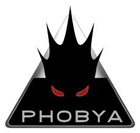
The Phobya is identified with the single triangle avatar with in the interior a figure of a demonic face. This avatar is in perfect agreement with the motto that always accompanies it: "Fear it"; and it is precisely in this phrase that the company is concentrating all its efforts to pursue excellence in making its products with a high technology.That's why the phrase "Fear it"!
Below we will show you the products that will be tested.
At the back we can see the technical specifications of the pumps that are differentiated by their power and, therefore, for the flow.
We quote below the comparative Blueprint.
Opening the package we see the usual attention to details, in this case the packaging to protect the pump from possible shocks.
We highlights the comfortable three-wire connector including two for power, while the third is used to carry the rotation index signal. The same three-pin connector allows you to connect the pumps to a Rheobus, after verifying that the same is able to provide adequate amperage. The advantage is that it can vary (decrease) the speed of the pump, so as to make it work at lower speeds when temperatures permit.
In addition to the pump, in the package are the mounting bracket and an adhesive antivibration pad. The only caution, is to remember to purchase the junctions that are not included.
As we can see from the comparison, the pumps are different in size, from smallest DC12-220 to the largest and powerful DC12-400. Regarding the dimensions, please consult the technical-comparative scheme picture posted in the above photos.
The pumps can be also identified by the model name printed on the back.
We can also note the serial number engraved in each pump, which traces and identifies the product for warranty and quality control before being shipped.
Specifications
As we can see from the images to follow, each pump has 2 holes: one for incoming and one for the exit of the liquid. The center hole is the inlet while the other is the outlet, as indicated with the arrows on them. Both two are ¼ "G threaded holes.
Unscrewing the 4 screws you can remove the cover, exposing the impeller.
We note that the central pump, DC12-260, still has the lid mounted despite the 4 screws are removed, unlike the other 2 pumps, ie the smallest (DC12-220) and the most powerful of the series (DC12-400). Below is a photo of the detail where you can note the presence, in each pump, of an O-ring that acts as a seal.
The impeller, held together by a magnetic cylinder, consists of 6 blades. As we see, it is completely removable for periodic cleaning.
The direction of rotation is counterclockwise, so that the pump pushes the water out. As central axis we find a ceramic pin, with 2 rubber supports at the ends that engage between the lid and the pump body.
The test system and testing methodology
We proceeded to test the 3 Phobya pumps both idle and loaded. In the idle circuit, the pumps were run with the mere presence of the High Flow G1/4" Flow meter of Aquacomputer (appreciated for its low resistance to the liquid and for its precision), linked to the Aquaero 5 XT Controller (to detect the flow).In addition to this we have connected the pump to a simple, but large, bowl to act as a buffer, to have the pump always full of water so as not to create the classic cavitation phenomenon.
In the full load test we have included after the pump an EK waterblock, the Supreme HF - Full Copper model, with the standard Jetplate, combined upstream the pump with the Phobya radiator, model G-Changer 360 Ver 1.2 Black. We used a bi-distilled H2O solution as liquid mean. Below, in the table, the synthetic summary of the components used for testing.
Test Results
First we tested the four pumps, without the load of the water block and radiator. With the help of a digital multimeter and a trimmer, we measured the minimum start voltage. For each new pump, we proceeded to vent the air from the system, in order to make this step faster and prevent the repechage by the pump, of the air bubbles.We proceeded to measure the flow multiple times and to calculate the average, to provide a precise estimate. Accuracy of flow meter is not in doubt. We repeated the test with the water block and the radiator connected, using the same methodology.We used the LAFAYETTE DMB-6 sound level meter for the detection of the noise of the pumps in operation.To avoid contamination of the test with the noise generated by moving liquid, we have isolated the pump every time in a cube with sound-absorbing material.To have a comparison element, we included in the test our test pump, the Swiftech MCP355 with the XSPC Reservoir Top; as a rotor, the latter, uses a turbine in magnetic suspension. Below we will analyze the charts.
We start from the first graph comparing the value of the minimum startup voltage of idle pumps, that is only pump - flowmeter - bowl.

As we see the yield of the 3 pumps in relation to the flow, that we will see in subsequent tests, is high. We continue however with the graph representing the values of noise generated by pumps in idle.

As we can see the pump that generates more noise, with a value of 35 dB, is the most powerful of the Phobya series, the DC12-400. The quieter is the smallest of the Phobya series, the DC12-220.
Consider now the first of the two graphs referred to the comparison of pumps flow.Here are the flow rates of pumps spun always at idle load.

Here, too, as was logical, the most powerful of the series is the Phobya DC12-400 with a quite high value; just below the 400 l/h. But the comparison does not hold with our reference pump that holds the record with just below 482 l/h.Let's see how they behave the pumps put under stress.

Here too the situation remains proportional to the previous graph. The positions remain unchanged even if with lower flow rates. The first two pumps, the DC12-220 and DC12-260 does not bear the comparison and return values below average while are able to maintain an acceptable value in the first two positions the DC12-400 and our reference pump, the MCP-355, which maintains the record.
Conclusions

| Performance: | |
| Quality/Price ratio: | |
| Overall: |
With no doubt we are faced with good products in terms of consumption and operating flow rate. We start from the first, smaller and more compact. It has the advantage of its low power consumption, its space saving size and that it can be disassembled for inspection and cleaning. In contrast we see it in cases built with only one waterblock systems and not much restrictive. Slightly superior, the DC12-260 is able to give some extra value in flow, but has the significant disadvantage of not being disassembled. With time the performance may go down because of the sediments.
For those who do not compromise and have room in the case, definitely recommend the flagship of the series, the DC12-400, which with its 4 meters of prevalence manages to fulfill its role even in systems with more than one waterblock; because they, that of recent production, are less restrictive. Another advantage they have in common, not to be underestimated, is the rotation signal, because it can be connected to the motherboard sensor and if the pump stops, you can set the bios to immediate shutdown the PC; as with the CPU heatsink fan. Last but not least, the really cheap cost compared to most noble pumps.In fact, you can take home with prices, starting from the smallest model DC12-220 to rise, of €33.99, €36.89 and €43.89. Being affordable, we can take two to make a separate loop for CPU and VGA/Chipset that are not much restrictive.
We also remember that, at the Aquatuning supplier are available, not for DC12-260 model, and for a few euros more, complete kits with pump and reservoir (bowl), or separately for those who were already in possession of the pump also the kit with the reservoir only, created by EK.
We did not encounter significant negative sides; we would like to stress however that the Phobya DC12-260 can not be opened for a thorough cleaning, and that the flow values do not compare favorably with the most renowned pumps.But we must keep in mind that they also cost twice as much, if not triple. We recommend the purchase of Phobya pumps here reviewed also for those who are attentive to the comfort, after a feasibility study of the circuit and of the needs at the design stage.
PROs:
- Perfect finish
- Compactness
- Tachometer Detection
- Standard ¼"G connections
- Low power requirements
- Complete Bundle
- Price
CONs:
- Poor performance (for the DC12-220)
- Just acceptable performance (for the DC12-260)
- Not inspectable for cleaning (for DC12-260)
Thanks are due to Aquatuning.de for sending the material
Valter d'Attoma
Translated by Marco Comerci
